THE history of space exploration is full of small steps, giant leaps for mankind, and many setbacks in between. So how significant is the discovery of water on Mars?
So how significant is NASA’S discovery of flowing water on Mars?
According to Associate Professor Michael Brown, an astronomer at Monash University, this new announcement is in some ways the “holy grail”.
“It’s a very big deal in terms of trying to find life on another planet; finding water is kind of the holy grail,” he said.
“It opens up the possibilities of (finding) life.”
Assoc Prof Brown described the new announcement as a “stepping stone” to that much bigger potential discovery, which would itself be one of the most profound events in human history.
“It’s certainly a very big deal and it’s certainly exciting and perhaps motivates what we’ll do next,” he said.
Astronomer Dr Alan Duffy from Swinburne Institute of Technology, who eagerly awaited the announcement from NASA, agreed that the discovery of flowing water was significant.
“Definitely finding water on another planet is unique,” he said.
“It gives us confidence that we are searching in the right place.”
But beyond the possibility of life on Mars, NASA’s announcement could also open the door for humans to one day inhabit the red planet.
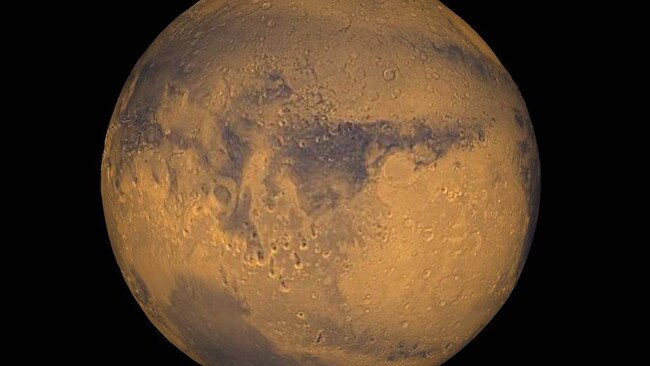
Finding water is kind of the holy grail.
NASA’s associate administrator for the Science Mission Directorate, John Grunsfeld, said the discovery would also make it easier to one day send a manned mission to Mars.
“To be able to live on the surface - the resources are there,” he said.
Georgia Tech doctoral student Lujendra Ojha — who first discovered the geological formations that underpinned this discovery, back in 2011 — cautioned that a lot more research was required.
“We’re just starting to scratch the surface about these features, and there’s a long way to go before we can safely say it is a habitable place or it has biological potential,” he said. “If humanity ever goes to Mars, this is probably an excellent source of water for consumption or rocket fuel.”
The other big leaps forward in humanity’s exploration of space
22 May 1946
First rocket to reach the edge of space
THE US military achieved its first high-altitude space flight using a rebuilt German V-2 rocket. Launched from the White Sands Proving Ground in New Mexico, the flight reached an altitude of 70 miles (112 kilometres).
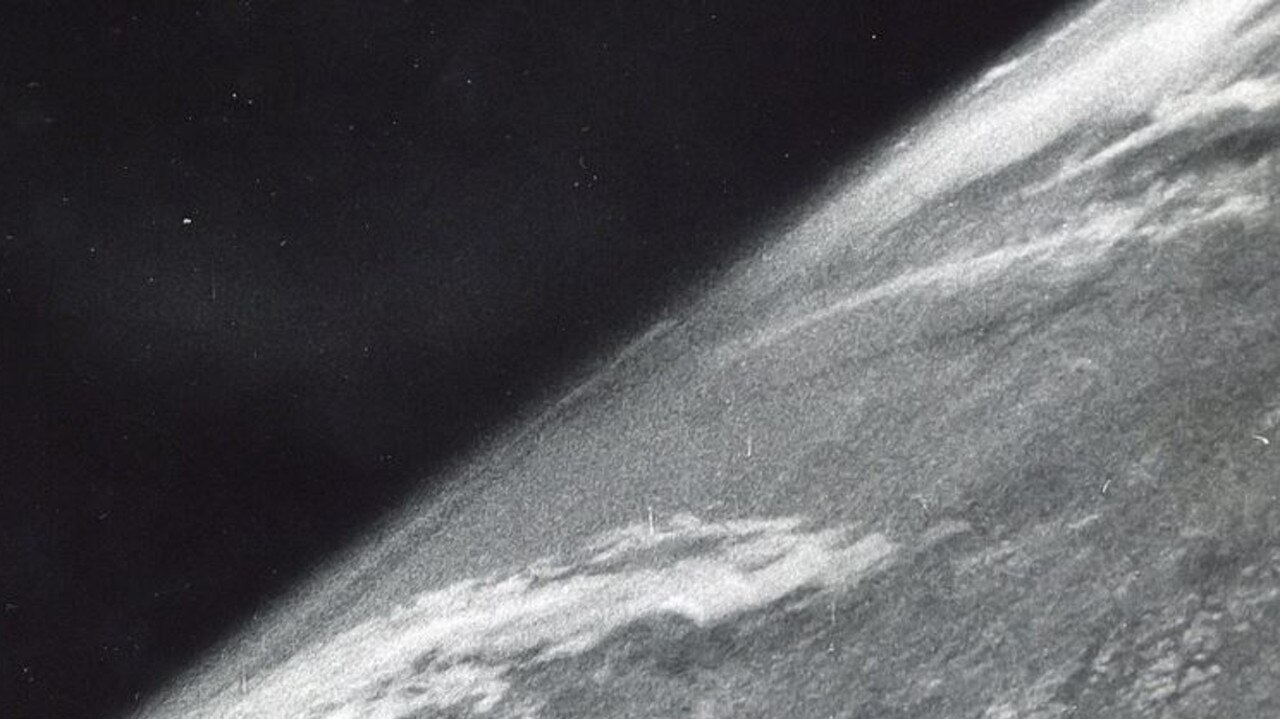
24 October 1946
First pictures of Earth
NOT long after the end of World War II the first grainy, black-and-white photos of the planet were taken.
They were captured from an altitude of 65 miles (104 kms) by a 35-millimeter motion picture camera riding on a V-2 missile launched from the White Sands Missile Range.
Fred Rulli, a 19-year-old enlisted man, drove into the desert with a team of people to retrieve the pictures. When the scientists found the cassette in good shape, he recalls, “They were ecstatic, they were jumping up and down like kids.”
Later, back at the launch site, “when they first projected [the photos] onto the screen, the scientists just went nuts,” reported Air & Space.
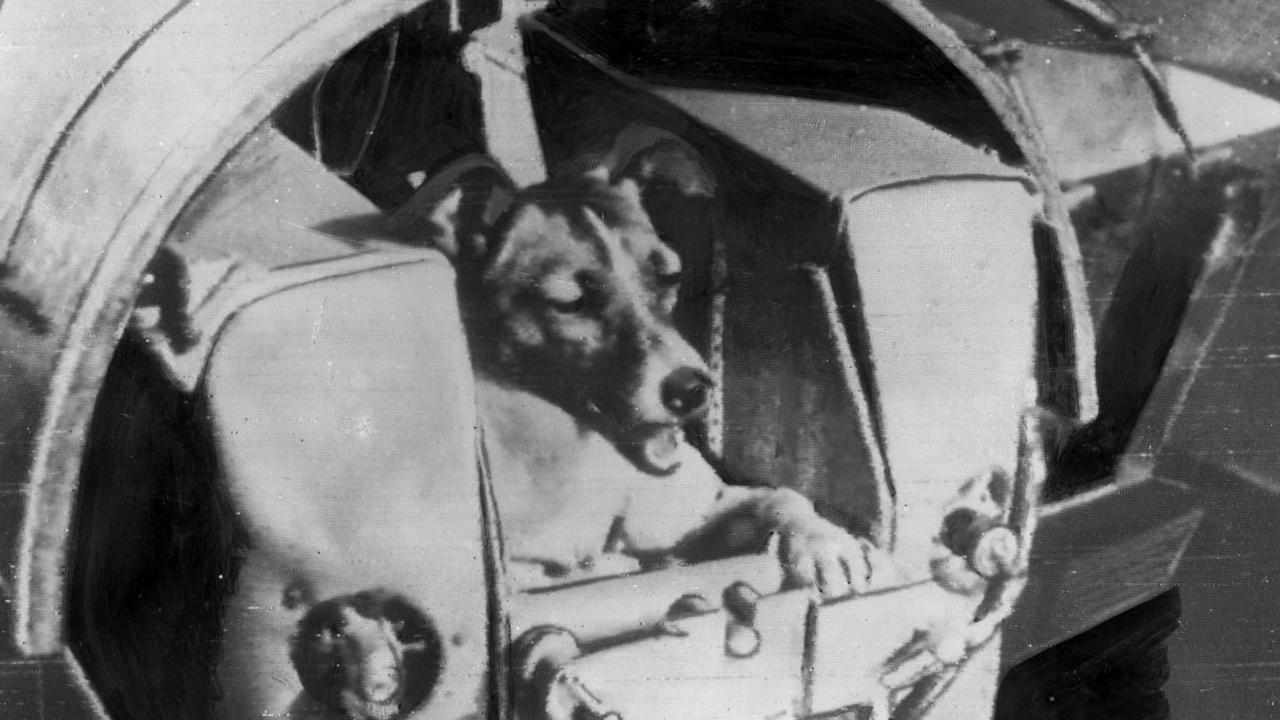
3 November 1957
First dog in orbit
A STRAY dog from the streets of Moscow made history when she became the first animal to orbit the earth.
Not much was known about the impact of spaceflight on living creatures at the time of little Laika’s mission, and the technology to de-orbit had not yet been developed so the tiny pup was never really expected to survive her mission.
Laika died within hours from overheating and it wasn’t until 2002 that Russia finally admitted the true cause of her death. They had previously claimed she was euthanised prior to oxygen depletion.
On April 11, 2008, Russian officials unveiled a monument to honour Laika near the military research facility in Moscow that prepared her flight to space.
13 September 1959
First spacecraft lands on the moon
IN a race to be the first, the USSR beat the US when their spacecraft landed on the moon.
Their space program was directed by Sergei Korolev, an aeronautical engineer and expert on rockets and it was in 1959 that Luna 2 was launched and made contact.
Weighing 390 kilograms the unmanned spacecraft carried instruments for measuring radiation, magnetic fields and meteorites.
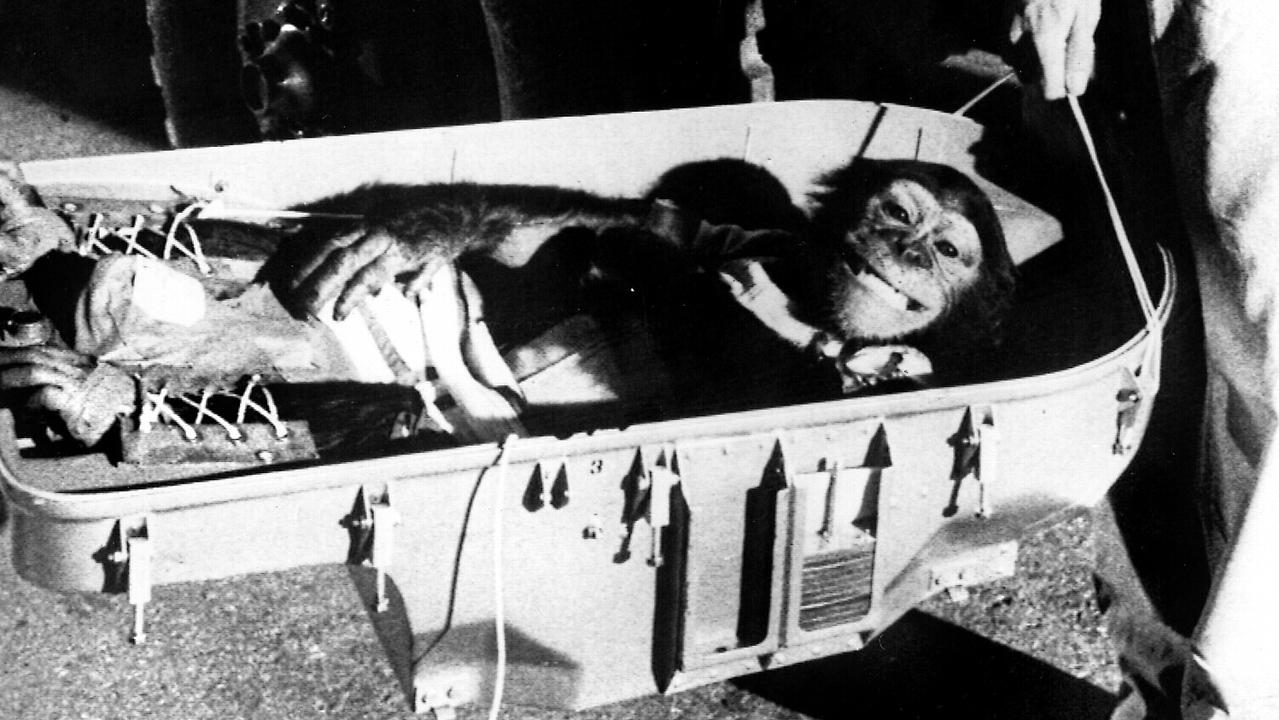
31 January 1961
First hominid in space
HAM the chimpanzee was the first hominid launched into space as part of America’s space program.
Ham’s name is an acronym for the lab which prepared him for his historic mission — the Holloman Aerospace Medical Center, located at Holloman Air Force Base in New Mexico. However he wasn’t named until after his successful mission because officials reportedly did not want the bad press that would come from the death of a ‘named’ chimpanzee if the mission failed.
Ham beat 40 other chimpanzee flight candidates and after successful training was sent on his mission. His flight was 16 minutes and 39 seconds long.
12 April 1961
First human spaceflight
RUSSIA made another milestone gain over the US when they sent the first human into space.
Yuri Alekseyevich Gagarin journeyed into outer space when his Vostok spacecraft completed an orbit of the Earth on 12 April 1961.
Gagarin became an international celebrity, and was awarded the Hero of the Soviet Union title, the nation’s highest honour.
Later that year the USSR also conducted the first human-crewed orbital flight. That same year the US conducted their first human-piloted space flight with Alan Shepard.
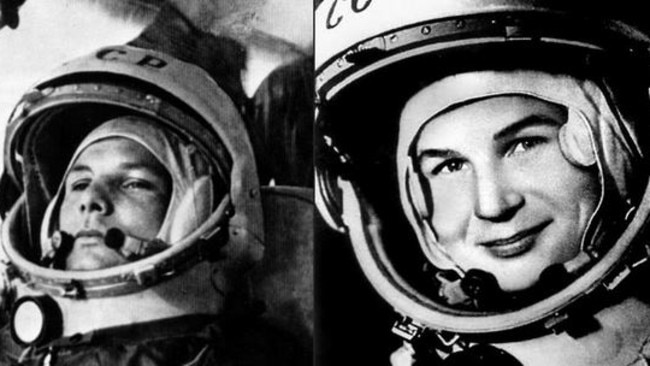
16 June 1963
First woman in space
RUSSIAN woman Valentina Tereshkova, a textile factory assembly worker and amateur skydiver, became the first women as well as the first civilian to fly in space after beating more than 400 other applicants and five finalists.
In order to join the Cosmonaut Corps, Tereshkova, 26 at the time, was honorarily inducted into the Soviet Air Force.
She orbited the earth 48 times and spent almost three days in space. During her flight Tereshkova maintained a flight log and took photographs of the horizon, which were later used to identify aerosol layers within the atmosphere.
14 July 1965
First close-up photographs of Mars
AFTER an eight-month voyage to Mars the Mariner 4 spacecraft made the first flyby of the red planet and became the first spacecraft to take close-up photographs of another planet.
A television camera onboard took 22 pictures, covering about 1 per cent of the planet and the images showed lunar-type impact craters, some of them touched with frost in the chill Martian evening.
Initially stored on a 4-track tape recorder, the pictures took four days to make it back to Earth.
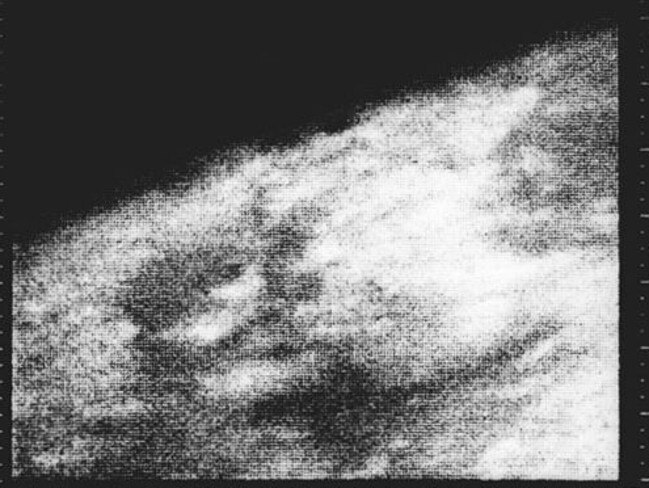
20 July 1969
First human on the moon
First space launch from a celestial body
AFTER all the competition between Russia and the US it was the US who eventually won the ultimate space race when Neil Armstrong became the first man to walk on the moon. Astronaut Edwin “Buzz” Aldrin also walked around with him.
It has been said that despite their differences the viewing room in Russia burst into huge applause when Armstrong took his first steps. The Soviet astronaut Alexei Leonov wrote: “Everyone forgot that we were all citizens of different countries on Earth. That moment really united the human race,” reported History Today.
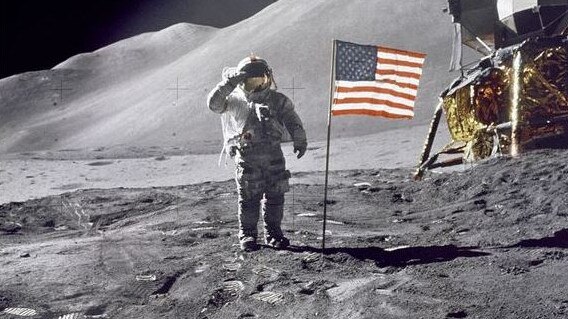
That’s one small step for man, one giant leap for mankind - Neil Armstrong
20 July 1976
First operational rover on Mars
VIKING 1 was the first of two spacecraft (along with Viking 2) sent to Mars as part of NASA’s Viking program. It was the first spacecraft to successfully land on Mars and perform its mission, and held the record for the longest Mars surface mission of 2307 days (from landing until surface mission termination, Earth time) until that record was broken by the Opportunity Rover on May 19, 2010.
7 February 1984
First untethered spacewalk
Bruce McCandless II a former American naval officer, aviator and electrical engineer made the first ever untethered free flight during the first of his two Space Shuttle missions using the Manned Maneuvering Unit in 1984.
McCandless logged over 312 hours in space, including four hours of MMU flight time.
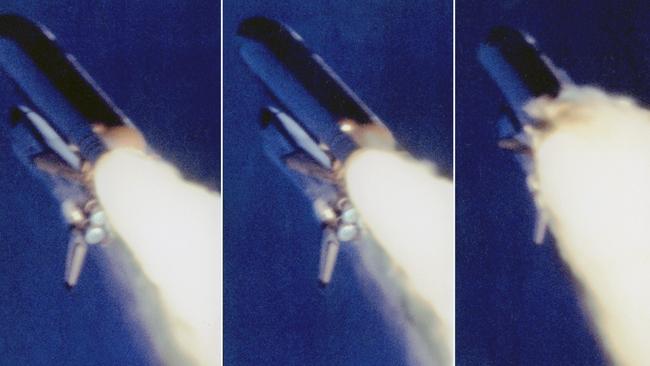
28 January 1986
Space Shuttle Challenger disaster
THERE can never be great achievements without failure - and this was a huge setback in space exploration for the US.
The NASA Space Shuttle orbiter Challenger broke apart 73 seconds into its flight, leading to the deaths of all seven crew members, which included five NASA astronauts and two Payload Specialists.
The spacecraft disintegrated over the Atlantic Ocean, off the coast of Cape Canaveral, Florida.
Around 17 per cent of Americans witnessed the launch live and after the accident there was a 32-month hiatus in the shuttle program.
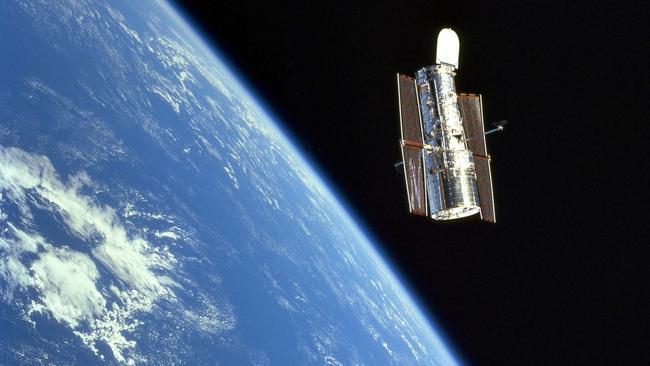
April 24 1990
Hubble Space Telescope launched
NASA’s Hubble Space Telescope was launched on the space shuttle Discovery from Kennedy Space Center.
The Hubble, which is still in orbit, has made more than 1.2 million observations since its mission began and astronomers using Hubble data have published more than 12,800 scientific papers, making it one of the most productive scientific instruments ever built.
20 November 1998
First international space station launched
THE International Space Station was a project initially begun by the Americans.
Originally called Freedom in the 1980s by then President Ronald Reagan, the project experienced long delays due to funding and technical problems. To reduce costs and increase international involvement it was redesigned in the 1990s and renamed.
In 1993 the United States and Russia agreed to merge their separate space station plans into a single facility integrating their respective modules and incorporating contributions from the European Space Agency (ESA) and Japan.
In 2009 the ISS hosted a full six-person crew for the first time.
1 February 2003
The Space Shuttle Columbia disaster
THE US suffered another major disaster in 2003 when the Space Shuttle Columbia disintegrated over Texas and Louisiana as it re-entered Earth’s atmosphere, killing all seven crew members.
During the launch of STS-107, Columbia’s 28th mission, a piece of foam insulation broke off from the Shuttle’s external tank and struck the left wing.
When Columbia reentered the atmosphere of Earth, the damage allowed hot atmospheric gases to penetrate and destroy the internal wing structure, which caused the spacecraft to become unstable and break apart.
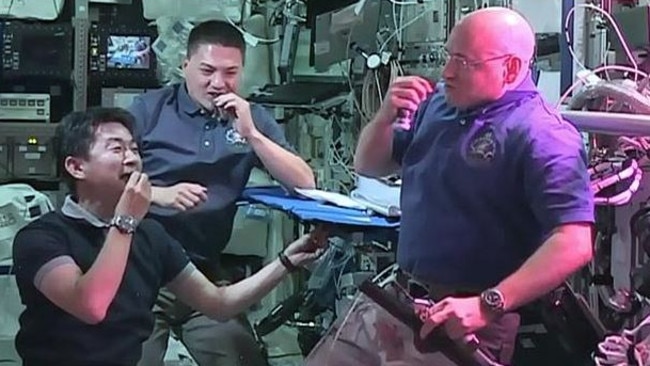
10 August 2015
First space crop produced
THE first food grown and harvested in space — a crop of red lettuce — was eaten by astronauts aboard the International Space Station last month. The lettuce was grown for 15 months with a system called Veg-01, which uses red, blue, and green LED lights to grow plants in a small space.
The astronauts ate half of their lettuce crop, setting aside the rest to be packaged and frozen for analysis. They also have a batch of zinnias to grow, which will be used to study how flowering plants can grow and pollinate with little gravity.
29 September 2015
Discovery of water on Mars
DATA analysed from NASA’s Mars Reconnaissance Orbiter — a multipurpose spacecraft designed to conduct exploration from orbit — has provided the strongest evidence ever seen that liquid water flows intermittently on present-day Mars.
Director of planetary science at NASA Headquarters Jim Green said the space agency was revolutionising our understanding of the Red Planet.
“Our rover’s finding a lot more humidity in the air than we ever imagined. As we inject the soils, they’re moist, they’re hydrated, full of water,” he said at a press conference.

Here’s what you can expect with tomorrow’s Parramatta weather
As we move into summer what can locals expect tomorrow? We have the latest word from the Weather Bureau.
Here’s what you can expect with tomorrow’s Parramatta weather
As we move into summer what can locals expect tomorrow? We have the latest word from the Weather Bureau.